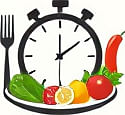Effective Kitchen Timer Strategies for Meal Prep
 by Shanie Goodwin
by Shanie Goodwin
Discover how kitchen timer strategies can streamline your meal prep, helping busy professionals create quick recipes and save time in the kitchen. Learn practical techniques to ensure nutritious meals fit seamlessly into a demanding schedule, promoting a healthier lifestyle.

Kitchen timer strategies play a key role in making meal prep more efficient, especially for those with packed schedules. By incorporating these approaches, you can focus on preparing nutritious meals without wasting valuable time.
First, consider how a kitchen timer helps with portion control during cooking. For instance, when making quick recipes like stir-fries, set the timer for exact intervals to prevent overcooking vegetables, ensuring they retain their nutrients and flavor.
In practice, start by planning your weekly meals. Choose simple dishes that cook in under 30 minutes, such as grilled chicken with vegetables. Use the timer to break down tasks—set it for 5 minutes to chop ingredients, then another for cooking. This method keeps everything on track and reduces stress.
Another useful technique involves batch cooking. Prepare larger quantities of grains or proteins ahead of time. For example, set your timer for 20 minutes to boil pasta or rice, allowing you to multitask with other chores. This approach not only saves time but also provides ready-to-eat options throughout the week.
Tips for Time-Saving Hacks
Here are some practical hacks to integrate timers into your routine:
- Use multiple timers for overlapping tasks. If you're baking while simmering a sauce, set one timer for 15 minutes on the oven and another for 10 minutes on the stove.
- Experiment with apps on your phone that act as timers with reminders. They can notify you when it's time to flip proteins or check on boiling pots.
- For quick recipes, like a 10-minute salad, use the timer to pace your assembly, ensuring balanced portions of greens, proteins, and dressings.
These strategies work well for busy professionals aiming to maintain a nutritious diet. By timing prep sessions, you can prepare meals in advance, such as overnight oats or pre-chopped veggies, ready for the next day.
To stay motivated, track your progress. Note how using a timer reduces overall kitchen time, freeing up moments for relaxation or work. Over time, this builds confidence in handling daily routines efficiently.
Remember, consistency is key. Apply these timer strategies regularly to see improvements in your meal prep process. Whether it's a speedy breakfast or a balanced dinner, the right timing ensures every meal is both healthy and enjoyable.
In summary, adopting these approaches can transform how you handle kitchen tasks, making it easier to prioritize nutritious eating amid a busy lifestyle.
